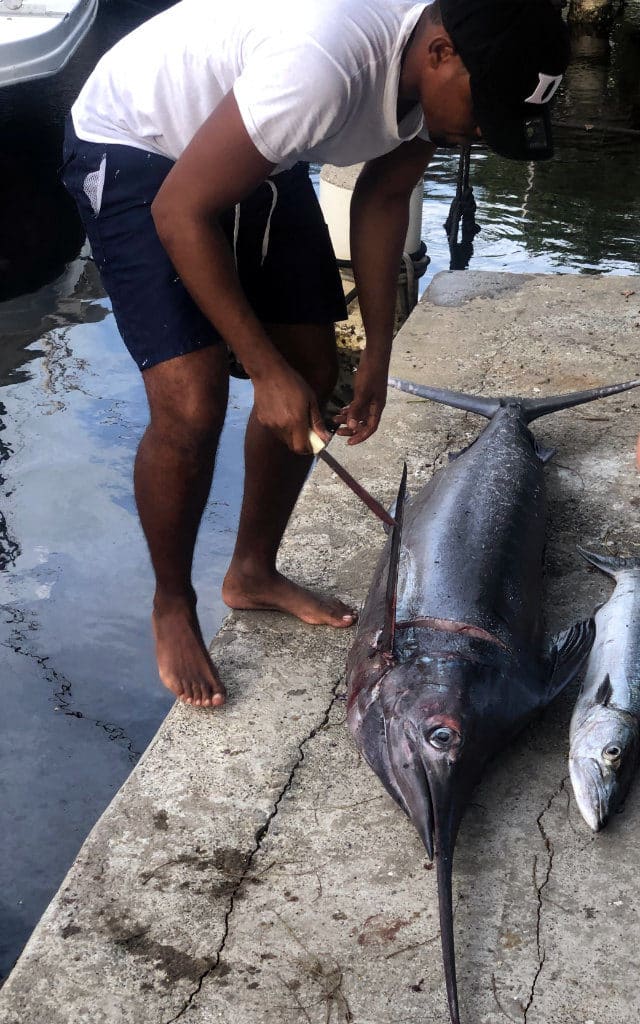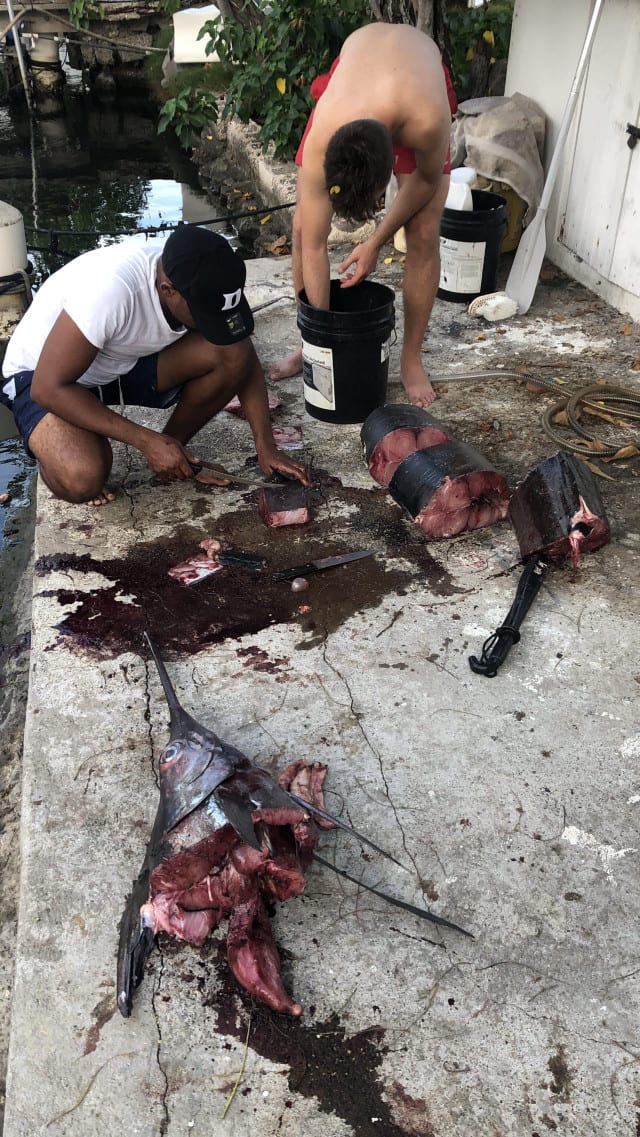For some it is the greatest source of happiness as fishermen and later it is a smoked delicacy, for others it is a sad sight when the fish ends up on the concrete floor of a marina and is trimmed to the size of steaks.
The Blue Marlin is also in Jamaica one of the greatest desires of the deep-sea fishing lovers. Many do not even know that the Marlin is on the list of endangered species of the International Union for Conservation of Nature and Natural Resources (IUCN).
The Marlin is not only threatened by overfishing, the species also suffers especially from the changes in the climate. Especially the decrease of the oxygen in the seawater due to increasing water temperatures is a particular problem for the Marlin.
The Marlin in very fast swimming fish. Some say that it is fast up to 80 miles per hour. Even if this should be exaggerated and it “only” ploughs through the oceans with 30 miles, it has an enormous oxygen demand, like other comparably fast fish, like the tuna. A Marlin can hunt in waters a half mile down.
The Marlin suffers of the hypoxic and even anoxic conditions which can now found in many coastal areas in the Atlantic Ocean. If you are interested in this growing problem, please find here the report “Ocean deoxygenation: Everyone’s problem. Causes, impacts, consequences and solutions” by International Union for Conservation of Nature and Natural Resources (IUCN 2019).
As Alex Rogers writes in “The Deep”, “electronic tags have demonstrated that these animals do not enter the oxygen-poor waters of the oxygen minimum zone. It is estimated that from 1960 to 2010 these animals have lost up to 15% of their habitat in the tropical north-east Atlantic as a result of expansion of the oxygen minimum layer. Habitat compression has a variety of consequences for the ecosystems of the upper ocean. For predators like jumbo squid, which can tolerate low-oxygen waters but can also hunt in oxygenated surface waters, it might mean an increase in the density of prey.” (Click on the cover)



